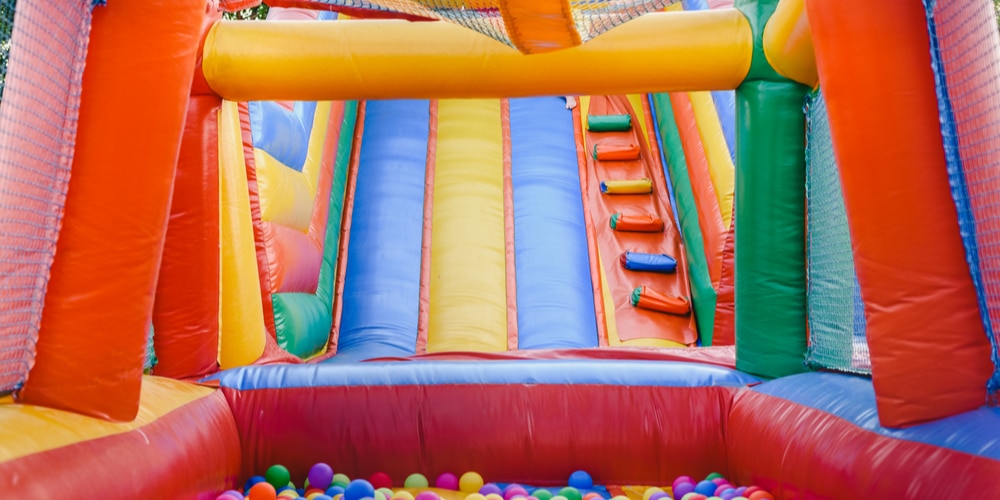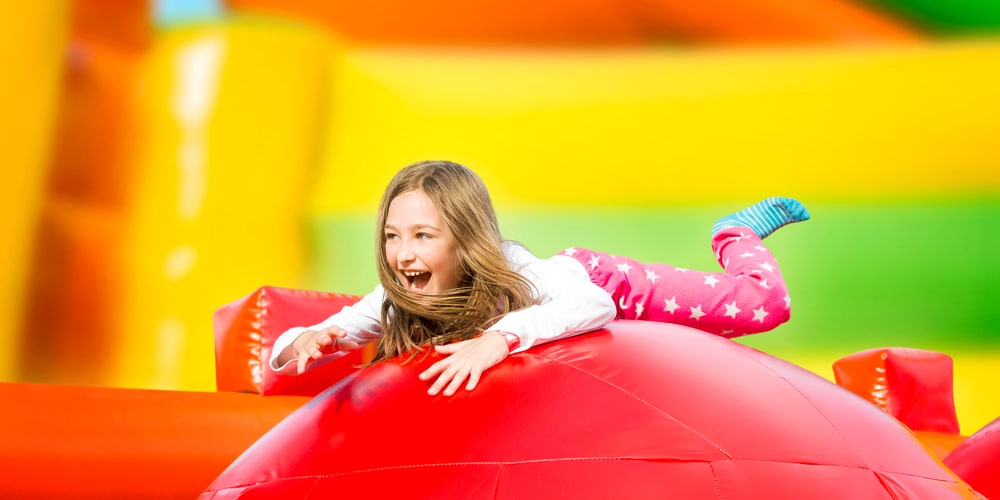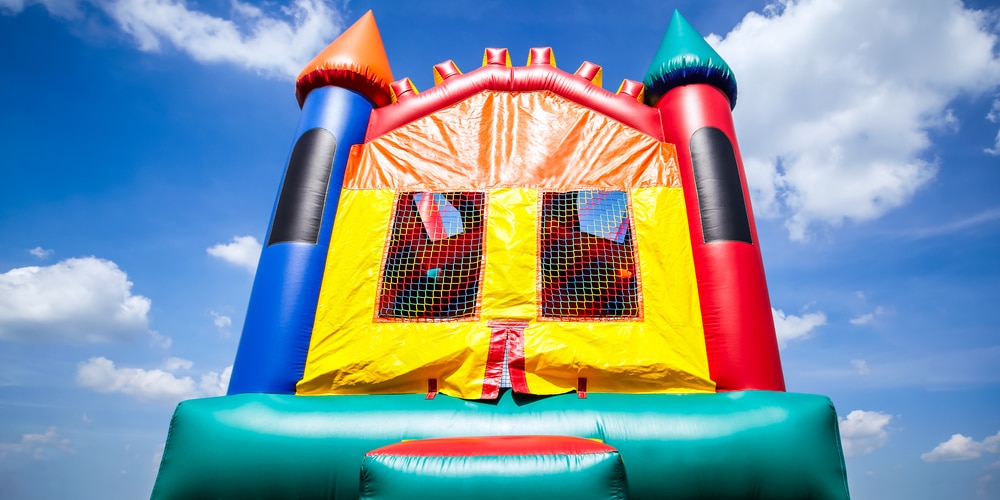So, you might have to organize a party for your kids, but you have one seemingly insignificant (but crucial) question: can I add a bounce house on sloped yard? Yes, an inflatable might be a fun surprise to most children, but what should you know before installing one (or a couple) in your yard?
Don’t worry: we have your back. Here, we’ll go through everything you must know to prepare your garden for a party involving bounce houses. And yes, bounce houses can be annoying if you have spent a lot of effort to grow a healthy and lush lawn in your backyard. But again, we are here to help make things less stressful for you.
Keep reading to find out about whether it is a good idea to set up a bounce house in your yard, and learn what you should pay attention to when prepping your garden for this kind of party.
Bounce House on a Sloped Yard: Is it Possible?
Let’s go straight to the core of the question. Ideally, you should place a bounce house on level terrain with little or no slope. 5% slope is the maximum an inflatable can afford. The steeper the area, the riskier it is to install an inflatable. Your bounce house might tip over under such circumstances.
However, if you have no better option, you can still add a bounce house with some slope if you have to. Just be careful to add extra anchoring to keep the safety levels optimal. Avoid skipping this step: it is not uncommon to hear about cases where bounce houses (with kids inside) have been moved by the wind and blown for a couple of yards.
And this leads to the next point. The area in your garden should be large enough to allow anchoring to install a bounce house. Plus, the ground must be free of debris. If you don’t feel comfortable installing inflatables on your grass, you should know that concrete, asphalt, and driveways also work well. Of course, the anchoring process will be slightly different with these materials. Instead of using the anchor points directly to the ground, you will have to use sand or water bags to keep the structure steady.
What Should You Know About Installing a Bounce House?
Besides what we said so far, you should never place your bounce house in direct content with the ground. Instead, place a protective layer under your inflatables (maybe you won’t need one indoors, but it is always best to be safe than sorry). Any tarp will work. Probably the company will provide you with one if you are renting a bounce house.
If you need to buy one, pick a light-colored one. It might seem trivial, but darker colors might heat up in the sun and damage your grass. And if you spent time and effort making your lawn healthy and bright, some precaution to maintain it that way would not be unwise.
The ideal location for your inflatables is in a flat and grassy part of your yard. The area must be free of rocks, roots, and debris. Avoid placing bounce houses over anything that could damage them. Gravel, mulch, sticks, branches, chips, and plants might puncture the material of your inflatable. Also, the area must be large enough: you’ll need enough space to allow kids to move around the bounce house and prevent them from getting hurt by sliding into a tree, bush, or other obstacles you might have on your property.
We haven’t mentioned the power source, but this is a crucial factor. If you do not have a generator for your air blower, you will need an extension. Don’t forget to keep safety in mind before installing your bounce house. Avoid having electrical cords around the bounce house where kids might be running. Instead, we recommend you pick a location closer to a power source.
Bounce House on Sloped Yard: Final thoughts
Finally, let’s go over a question that might have popped in your mind a while ago: will a bounce house kill your grass? The answer is not as straightforward as you may expect. Indeed, it depends on the weather conditions and the health of your lawn.
If the temperatures are not hot, your grass might not suffer. However, if the sun is hitting harshly, you might cause your grass to suffocate. But with frequent watering and adequate care, you will be able to revert your garden to its original looks!


